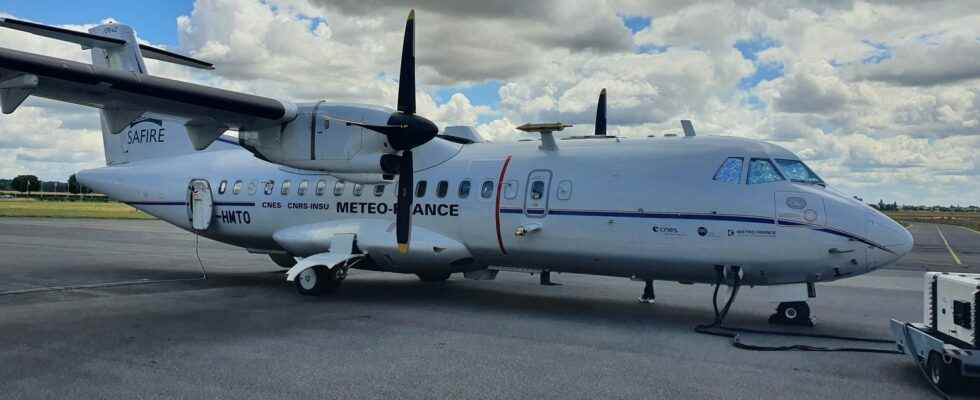If you are within a radius of 200 kilometers around Paris, you may have the opportunity to see a plane flying at low altitude by July 7, 2022. It is a CNRS scientific plane which will analyze the composition of the air to understand how the plume of pollution in the Paris basin moves.
This device, lined with sensors and with a vacuum tube fixed under the cabin, will perform around fifteen flights in all as part of the CNRS’ “Paname 2022” program, which aims to study air quality in Ile. -of France. Inside, a few technicians and around twenty scientific instruments: a veritable “flying laboratory”enthuses Paola Formenti, researcher at the CNRS Atmospheric Systems Laboratory. “The noise we hear is the machines running, the pumps that suck in the air from the outside, but also the cooling systems of the instruments.she describes. All the operators are at their workstations to calibrate their instruments and ensure that, at takeoff, everything is working.”

The objective of the mission is therefore to collect data on the composition of pollution particles from the Paris region. “We were able to detect compounds that are sulphates. We went over plumes that we attribute to punctual emissions from thermal power plants”, explains Paola Formenti. Particularly precise data: “It is very important to know what the particles are made of, because they can add to the effect of greenhouse gases, and therefore contribute or not to climate change.”
This information is all the more valuable because it is impossible to obtain it while remaining on the ground, explains Thierry Bourriane research engineer at Météo France: “Generally, aerosols are produced near the ground. They will then be lifted by the wind and move.”
“By carrying out a measurement campaign by plane, we will be able to explore a large area and go and measure directly where the aerosols are transformed during the day.”
Thierry Bourriane, research engineer at Météo Franceat franceinfo

After five hours of preparation, the aircraft can take off for this new mission. Three hours flights are on the program at just 300 meters in the direction of the east of Paris to Saint Dizier in Haute-Marne. “There are many unknowns about the processes that govern the transformations. Finally, what really happens to pollutants once they are emitted into the atmosphere?asks Paola Formenti. We still know them quite poorly and therefore the objective of the project is really to go far in improving our understanding of these processes and these compounds.”
Data that CNRS scientists have given themselves two years to exploit and analyze.
